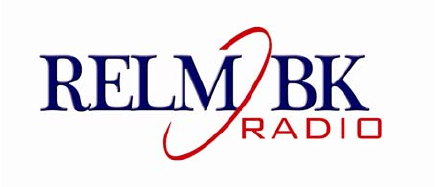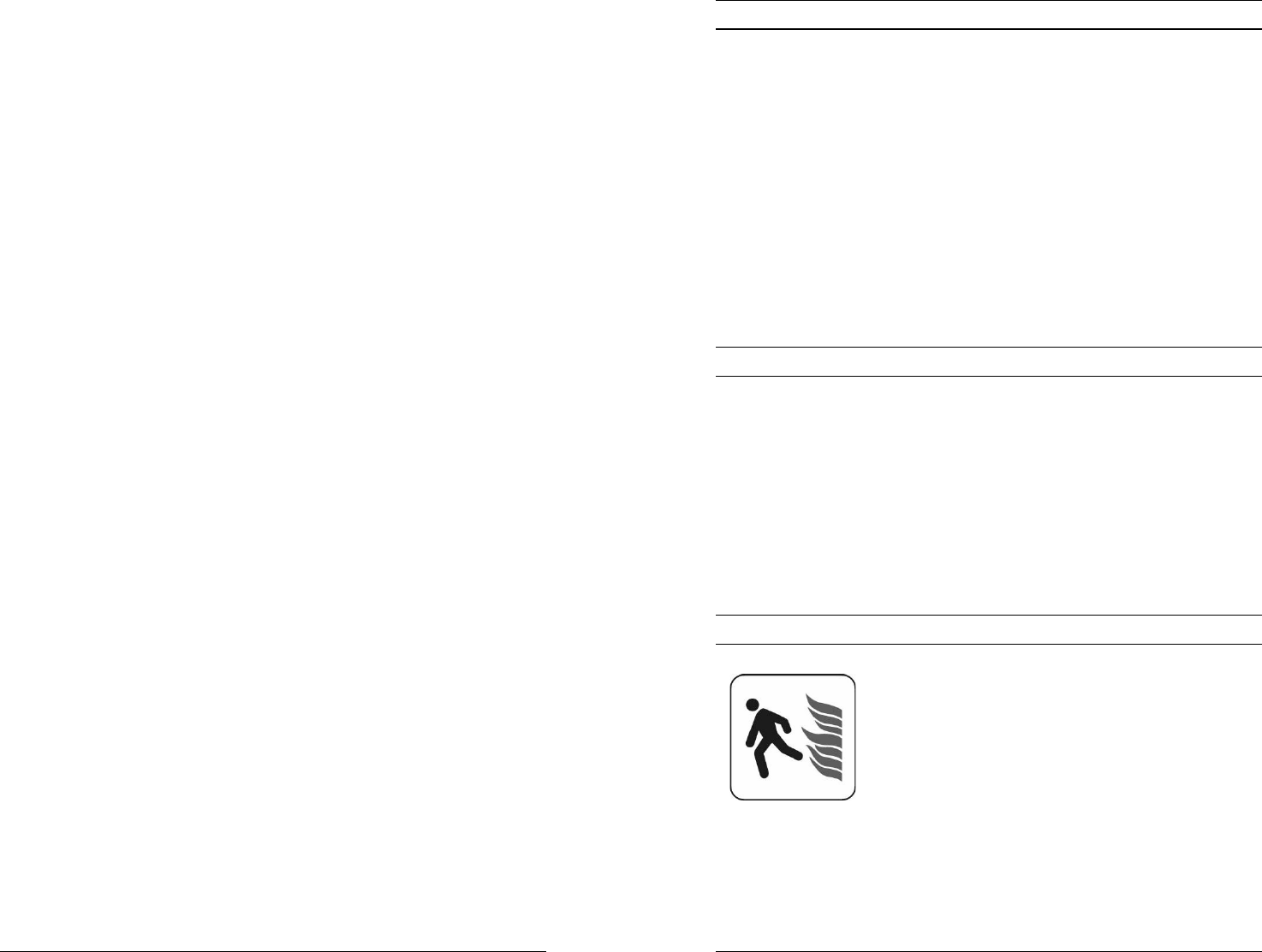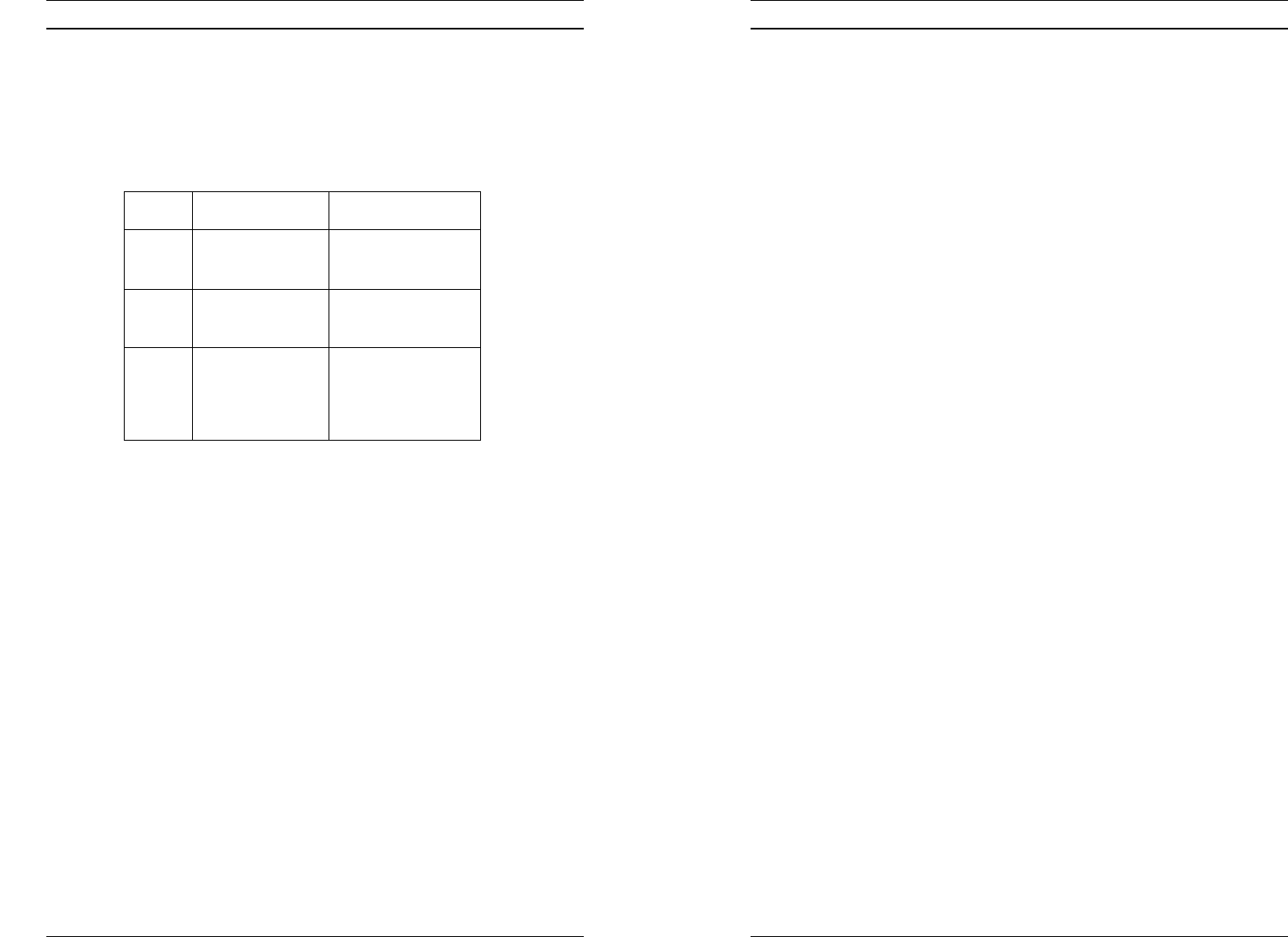BK Technologies KNGP150 6W VHF LAND MOBILE RADIO User Manual KNG P150 Owners Manual
RELM WIRELESS CORP. - BK RADIO 6W VHF LAND MOBILE RADIO KNG P150 Owners Manual
Contents
- 1. OWNERS MANUAL
- 2. User Manual
OWNERS MANUAL

KNG P150
Owner’s Manual
RELM Wireless Corporation
7100 Technology Drive
W. Melbourne, FL 32904

KNG P150 Owner’s Manual 2
TABLE OF CONTENTS
Introduction .............................................................................................3
FCC Requirements.................................................................................3
Safety Precautions..................................................................................3
RF Energy Exposure Awareness and Control Information.....................4
Basic Operation ......................................................................................7
Mixed Mode Operation ...........................................................................8
Channel Groups......................................................................................9
Scan Operation.....................................................................................10
Priority Scan..........................................................................................12
Unit-To-Unit Call ...................................................................................13
Emergency Call ....................................................................................16
Other Operational Features..................................................................17
19 BK Radio
BUSY CHANNEL LOCKOUT
The Busy Channel Lockout feature applies only to those channels
programmed with a receive Channel Guard value. When carrier activity
is detected on the channel selected, the radio checks the receive
Channel Guard value. If the proper Channel Guard value is present,
the radio can transmit on that channel.
If the radio detects an incorrect value or carrier activity only, the
transmitter is disabled. If an attempt is made to transmit, an alert tone
will be generated and the display will show the word BUSY until the
channel becomes available or the PTT switch is released.
Channels not programmed with a receive Channel Guard value can be
used to transmit regardless of carrier activity.

KNG P150 Owner’s Manual 18
ANI ENCODING (Analog Mode Only)
ANI encoding (Automatic Numeric Identification), if enabled, transmits
a sequence of DTMF tones each time you press the PTT switch. You
will hear a sidetone. Your dealer can program the ANI number to be
sent.
TIME-OUT TIMER
The transmit Time-Out Timer limits the duration of calls and guards
against accidentally locking on the transmitter and tying up the radio
system. Your dealer can program the duration of the Time-Out Timer
(15–225 seconds, or disabled).
BUSY CHANNEL
If the radio has been programmed for Busy Channel operation, it will
operate in one of the following Modes:
• Busy Channel Indication
• Busy Channel Lockout
BUSY CHANNEL INDICATION
The yellow Busy Channel Indicator glows if there is carrier activity on
the selected channel. If the selected channel is a Channel Guard
channel and the proper Channel Guard value is not detected, the Busy
Channel Indicator remains on for the duration of the carrier activity and
no message is heard. During Scan and Priority Scan operation, the
Busy Channel Indicator glows when activity is detected on any channel
on the Scan List.
When scanning or priority scanning Channel Guard channels and
activity has been detected, the Busy Channel Indicator glows for the
time period necessary to determine if the proper Channel Guard value
has been received. This will cause the Busy Channel Indicator to flash
at various rates.
3 BK Radio
INTRODUCTION
CONGRATULATIONS, you now own a BK Radio KNG P150 APCO
Project 25 digital radio. To meet backwards compatibility as defined
by the APCO Project 25 standard, the KNG digital portable radio
provides users the ability to interoperate with narrow or wide band
analog channels as well as digital systems. Please take a moment to
read the information in this manual so you can get optimum
performance from your new radio.
FCC REQUIREMENTS
Your radio must be properly licensed by the Federal Communications
Commission prior to use. Your BK Radio dealer can assist you in
meeting these requirements. Your dealer will program each radio with
your authorized frequencies, signaling codes, etc., and will be there to
meet your communications needs as your system expands.
SAFETY PRECAUTIONS
• Do not operate the transmitter in close proximity
to blasting caps.
• Do not operate the radio in an explosive
atmosphere (petroleum fuels, solvents, dust,
etc.) unless your radio is an intrinsically safe
model designed for such use.

KNG P150 Owner’s Manual 4
RF ENERGY EXPOSURE AWARENESS AND
CONTROL INFORMATION, AND OPERATIONAL
INSTRUCTIONS FOR FCC OCCUPATIONAL USE
REQUIREMENTS
BEFORE USING YOUR PORTABLE 2-WAY RADIO,
READ THIS IMPORTANT RF ENERGY AWARENESS AND
CONTROL INFORMATION AND
OPERATIONAL INSTRUCTIONS TO ENSURE COMPLIANCE WITH
THE FCC’S RF EXPOSURE GUIDELINES.
NOTICE: This radio is intended for use in occupational/controlled
conditions, where users have full knowledge of their exposure
and can exercise control over their exposure to meet FCC limits.
This radio device is NOT authorized for general population,
consumer, or any other use.
This 2-way radio uses electromagnetic energy in the radio frequency
(RF) spectrum to provide communications between two or more users
over a distance. It uses radio frequency (RF) energy or radio waves to
send and receive calls. RF energy is one form of electromagnetic
energy; other forms include electric power, radar, sunlight and x-rays.
RF energy, however, should not be confused with these other forms of
electromagnetic energy, which when used improperly can cause
biological damage. Very high levels of x-rays, for example, can
damage tissues and genetic material. The energy levels associated
with radio waves from portable 2-way radios, when properly used, are
not great enough to cause biological damage.
Experts in science, engineering, medicine, health and industry work
with organizations to develop standards for exposure to RF energy.
These standards provide recommended levels of RF exposure for both
workers and the general public. These recommended RF exposure
levels include substantial margins of protection. All 2-way radios
marketed in North America are designed, manufactured and tested to
ensure they meet government established RF exposure levels. In
addition, manufacturers also recommend specific operating
instructions to users of 2-way radios.
These instructions are important because they inform users about RF
energy exposure and provide simple procedures on how to control it.
Please refer to the following WEBSITES for more information on what
RF energy exposure is and how to control your exposure to assure
compliance with established RF exposure limits.
http://www.fcc.gov/oet/rfsafety/rf-faqs.html
http://www.osha.gov/SLTC/radiofrequencyradiation/index.html
17 BK Radio
OTHER OPERATIONAL FEATURES
The BK Radio KNG Series is based on a microprocessor core that
allows extra features and operational characteristics to be
programmed into the radio. Your dealer can help define the best
operational settings for your system and program them into the radio.
SCAN DELAY
Scan delay lets the radio receive a response to a transmission before
scanning the other channels for activity. If you find that your scanner is
restarting before message replies are received, you can ask your
dealer to increase the scan delay time (0–7.5 seconds).
This timer is also used to allow for Talkback Scan, Mixed Mode
Talkback, and Unit-To-Unit Callback.
HI/LO POWER
Each channel in the radio can be individually programmed to always
transmit in Low-Power Mode, regardless of the position of the radio's
switch (or menu setting). If the programming for the channel allows
high-power transmissions, the power level can be selected with a
switch or the keypad menu.
DTMF ENCODING (Analog Mode Only)
Keypad-equipped radios can be programmed to enable DTMF (Dual
Tone Multiple Frequency) encoding. To send DTMF tones (similar to
the tones used by a standard push-button telephone):
1. Press and hold the PTT switch.
2. Press any of the keys on the keypad.
You will hear a sidetone.

KNG P150 Owner’s Manual 16
EMERGENCY CALL
Note: Emergency operation only applies to channels
programmed for Digital or Mixed Mode transmissions.
To place an emergency group call, press and hold the emergency
button until the radio beeps and the display flashes. All scanning and
priority scanning functions will be disabled. If the radio is in Unit-To-
Unit Mode, that mode will be exited and the radio will be placed in
Emergency Mode. Each subsequent press of PTT will cause the
radio to transmit on the knob-selected channel with the emergency bit
set, indicating an emergency condition. If the Channel Selector is
changed, the Emergency Mode will follow to the newly selected
channel. Cycle power to return the radio to normal operation.
On channels programmed for analog transmissions, pressing PTT in
Emergency Mode will result in a normal analog transmission.
5 BK Radio
FEDERAL COMMUNICATIONS COMMISSION
REGULATIONS
The FCC rules require manufacturers to comply with the FCC RF
energy exposure limits for portable 2-way radios before they can be
marketed in the U.S. When 2-way radios are used as a consequence
of employment, the FCC requires users to be fully aware of and able to
control their exposure to meet occupational requirements. Exposure
awareness can be facilitated by the use of a product label directing
users to specific user awareness information. Your BK Radio 2-way
radio has a RF exposure product label. Also, your BK Radio owner’s
and service manuals include information and operating instructions
required to control your RF exposure and to satisfy compliance
requirements.
COMPLIANCE WITH RF EXPOSURE STANDARDS
Your BK Radio 2-way radio is designed and tested to comply with a
number of national and international standards and guidelines (listed
below) for human exposure to radio frequency electromagnetic energy.
This radio complies with the IEEE and ICNIRP exposure limits for
occupational/controlled RF exposure environment at operating duty
factors of up to 50% transmitting and is authorized by the FCC for
occupational use only. In terms of measuring RF energy for
compliance with the FCC exposure guidelines, your radio radiates
measurable RF energy only while it is transmitting (during talking), not
when it is receiving (listening) or in Standby Mode. Note: The
approved batteries supplied with this radio are rated for a 5-5-90 duty
factor (5% talk-5% listen - 90% standby), even though this radio
complies with the FCC occupational RF exposure limits and may
operate at duty factors of up to 50% talk.
Your BK Radio 2-way radio complies with the following RF energy
exposure standards and guidelines:
• United States Federal Communications Commission, Code of
Federal Regulations; 47 CFR §§ 1.1307, 1.1310, 2.1091 and
2.1093
• American National Standards Institute (ANSI) / Institute of
Electrical and Electronic Engineers (IEEE) C95. 1-1992
• Institute of Electrical and Electronic Engineers (IEEE) C95.1-
1999 Edition
INDUSTRY CANADA COMPLIANCE
This Class B digital apparatus complies with Canadian ICES-003. Cet
appareil numerique de la classe B est conforme à la norme NMB-003
Canada.

KNG P150 Owner’s Manual 6
RF EXPOSURE COMPLIANCE AND CONTROL GUIDELINES
AND OPERATING INSTRUCTIONS
To control your exposure and ensure compliance with the
occupational/controlled environment exposure limits always adhere to
the following procedures.
Guidelines:
• Do not remove the RF Exposure Label from the device.
• User awareness instructions must accompany device when
transferred to other users.
• Do not use this device if the operational requirements described
herein are not met.
Operating Instructions:
• Transmit no more than the rated duty factor of 50% of the time. To
transmit (talk), push the Push-To-Talk (PTT) button. To receive
calls, release the PTT button. Transmitting 50% of the time, or less,
is important because this radio generates measurable RF energy
exposure only when transmitting (in terms of measuring for
standards compliance).
• Hold the radio in a vertical position in front of face with the
microphone (and the other parts of the radio, including the antenna)
at least one inch (2.5 cm) away from the nose. Keeping the radio at
the proper distance is important because RF exposures decrease
with distance from the antenna. Antenna should be kept away from
eyes.
• When worn on the body, always place the radio in a BK Radio
approved clip, holder, holster, case, or body harness for this product.
Using approved body-worn accessories is important because the use
of BK Radio or other manufacturer’s non-approved accessories may
result in exposure levels which exceed the FCC’s
occupational/controlled environment RF exposure limits.
• If you are not using a body-worn accessory and are not using the
radio in the intended use position in front of the face, then ensure the
antenna and the radio are kept at least one inch (2.5 cm) from the
body when transmitting. Keeping the radio at the proper distance is
important because RF exposures decrease with increasing distance
from the antenna.
• Use only BK Radio approved supplied or replacement antennas,
batteries, and accessories. Use of non-BK Radio approved
antennas, batteries, and accessories may exceed the FCC RF
exposure guidelines.
• For a list of BK Radio approved accessories visit the following
website : http://www.relm.com.
CONTACT INFORMATION
For additional information on exposure requirements or other
information, visit website http://www.relm.com.
15 BK Radio
RECEIVING A UNIT-TO-UNIT CALL
When a Unit-To-Unit call is received while the radio is in normal
Operating Mode, the radio will beep twice. The display will show the
ID of the calling unit. If the ID matches one of the Call List IDs, the
associated label will be displayed along with the RX and phone icons.
Otherwise the numeric ID will be displayed along with the RX and
phone icons. The calling unit’s ID will be displayed for the duration of
the reception, and once the signal goes away, for a programmed hold
time. When the hold time expires, the display will return to the normal
Operating Mode display, but the phone icon will flash until the U2U
button is pressed, putting the radio in Unit-To-Unit Mode, displaying
the last active ID.
UNIT-TO-UNIT CALLBACK
If Unit-To-Unit callback is enabled, and a Unit-To-Unit call is received
on the Ready-to-Transmit (RTX) channel, the user may press PTT
before the hold time expires, causing the radio to enter Unit-To-Unit
Mode and transmit using the received ID as the destination ID. If the
callback timer expires before PTT is pressed, the radio will return to
normal Operating Mode, but the phone icon will flash until Unit-to-Unit
Mode is entered, bringing up the last active ID.
The callback timer can be cleared by making the held channel invalid.
For instance, if a scan channel is being held, turn scan off.

KNG P150 Owner’s Manual 14
If the RTX channel’s Digital Squelch Mode is set to ‘normal’, the radio
performs as when the Squelch Mode is ‘selective’, except all individual
calls will be received when the incoming NAC matches the channel’s
programmed receive NAC, not just individual calls addressed to the
unit. Individual calls not addressed to the unit will be indistinguishable
from group calls. Only the channel label will be displayed, not the ID
of the calling unit.
If Unit-To-Unit Mode is entered when the RTX channel is programmed
for analog-only transmissions, pressing PTT will cause the radio to
beep until PTT is released. The user must select a channel capable
of digital transmissions before placing a Unit-To-Unit call. If the
RTX channel is programmed for Mixed Mode transmit, transmissions
will be made as digital Unit-To-Unit calls while the radio is in Unit-To-
Unit Mode, regardless of the position of the ‘TX Digital’ switch.
INITIATING A UNIT-TO-UNIT CALL
To initiate a Unit-To-Unit call, press the U2U button to enter Unit-To-
Unit Mode. The label of the last active (called or received) ID will
appear on the display.
If the last active ID was a Call List ID, its label will be displayed along
with the phone icon, otherwise the numeric ID will be displayed along
with the phone icon. If a label is displayed, press and hold [#] to view
the corresponding numeric ID.
To place a call to the displayed unit, press PTT. To choose another
unit, use the keypad to enter the desired call list entry (0 - 9), or press
down arrow repeatedly to cycle through all call list entries, or press [#]
to manually key in a new ID (up to 7 digits). To re-select the ‘last
active’ ID, press the U2U button. Once the new unit ID is selected or
entered, press PTT to place the call.
To exit Unit-To-Unit Mode, press and hold the U2U button.
7 BK Radio
BASIC OPERATION
RECEIVE
1. Turn power on by turning the Volume knob clockwise. A beep
sounds, indicating the radio is operational. The LCD display, if
installed, shows the current channel.
2. Select a channel by turning the 16-position Channel Selector knob.
3. Adjust squelch and volume by pressing and releasing the
MONITOR button. You will hear noise. Set the volume to a
comfortable level. Then press the MONITOR button again to turn
monitor mode off.
TRANSMIT
1. Press the PTT (Push-To-Talk) switch. When the transmitter is on,
the red Transmit Indicator glows and TX appears in the display.
2. Talk in a normal voice with the microphone one to two inches from
your mouth.
3. Release the PTT switch to stop transmitting.
If the Transmit Indicator does not glow when you press the PTT
switch, the battery pack may need to be charged. If so, the display will
indicate LOBATT, and the yellow Low-Battery Indicator will flash. If the
Transmit Indicator does not glow and a tone sounds, you are on a
receive-only channel or the channel is busy (if Busy Channel lockout is
enabled). Select an authorized transmit channel.
If the length of your message exceeds the preset Time-Out Timer
setting, the transmitter automatically shuts off and a tone sounds. To
continue transmission, release the PTT switch, and then press it again
and continue talking.

KNG P150 Owner’s Manual 8
MIXED MODE OPERATION
The receiver and transmitter are capable of operating in analog wide-
band (25 kHz channel spacing), analog narrow-band (12.5 kHz channel
spacing) and APCO Project 25 Digital Mode.
Each channel’s Receive and Transmit Mode can be set independently
as follows:
Mode RX TX
Analog Receive qualified
analog signals
only
Transmit analog
signals only
Digital Receive qualified
digital signals
only
Transmit digital
signals only
Mixed Automatically
receive qualified
analog or digital
signals
Transmit analog or
digital signal,
depending on the
status of ‘TX
Digital’ soft switch.
Digital receptions and transmissions will be indicated by illuminating
the ‘D’ annunciator in addition to the ‘RX’ or ‘TX’ annunciator.
MIXED MODE TALKBACK
If Mixed Mode Talkback is enabled, transmissions initiated while hold
time remains will be in the same mode as the received signal, if the
signal was received on the Ready to Transmit (RTX) channel.
Depending on programming, the RTX channel can be the main
channel, a held scan or priority channel if Talkback Scan is enabled, or
the Priority 1 channel if TX on PR1 is enabled. TX Mode on the RTX
channel must be set to MIXED.
While hold time after a reception remains, transmissions will be in the
same mode as the received signal, regardless of the status of the ‘TX
Digital’ soft switch. As in Talkback Scan, the RTX channel and receive
annunciators will be displayed for the duration of the timer.
The talkback timer can be cleared by making the held channel invalid.
For instance, if a scan channel is being held, turn scan off.
13 BK Radio
UNIT-TO-UNIT CALL
P25 Unit IDs allow for Unit-To-Unit calls when the radio is operating in
Digital Mode. To view the radio’s ID, press and hold the U2U button
while not in Unit-To-Unit Mode. (Unit-To-Unit Mode is indicated by a
phone icon in the upper right corner of the display). Channels
programmed for analog only operation will not be able to transmit or
receive Unit-To-Unit calls.
UNIT-TO-UNIT MODE
When the radio is in Unit-To-Unit Mode, all scanning functions will be
disabled. The radio will receive and transmit on the Ready-to-Transmit
(RTX) channel only. Depending on programming, the RTX channel
can be the main channel, a held scan or priority channel if Talkback
Scan is enabled, or the Priority 1 channel if TX on PR1 is enabled. To
alert the user that the radio is in Unit-To-Unit Mode, a beep will
periodically sound until the unit is returned to normal Operating Mode.
If the RTX channel’s Digital Squelch Mode is set to ‘selective’, the
radio will accept group calls, correctly addressed Unit-To-Unit calls,
and if RX Mode is set to mixed, analog signals.
When a correctly addressed Unit-To-Unit call is received, the radio will
beep twice. If the calling unit’s ID matches one of the Call List IDs, the
associated label will be displayed along with the RX and phone icon.
Otherwise, the numeric ID will be displayed along with the RX and
phone icon.
If the calling unit is not the same unit displayed before the call was
received, the calling unit’s ID will be displayed for the duration of the
reception. The previously displayed ID will remain the default transmit
ID, but the interrupting ID will be captured as ‘last active’. To speak to
the interrupting caller, press the U2U button to make the last active ID
the new default transmit ID.
When a group call (or, if allowed, an analog signal) is received, the
radio will display the RTX channel’s label for the duration of the
reception.

KNG P150 Owner’s Manual 12
PRIORITY SCAN
Priority Scan enables the radio to receive on any channel while
monitoring for a message on the designated priority channel(s). The
radio samples each priority channel at a preset rate (.25-2.0 seconds)
regardless of activity on any other channel. Priority Scan operates only
while the radio is not transmitting and can be used in combination with
scan operation.
Priority Scan is enabled, the display flashes SCN. If a message is
received on a priority channel, the Priority Indicator lights, and the
radio receiver locks onto that channel for the duration of the
transmission, unless a higher priority channel interrupts.
Priority Scan can be used in combination with Channel Guard. If a
message is received on a priority channel, the radio receiver locks on
to the priority channel and checks to see if the proper Channel Guard
value is present. If the signal contains the proper Channel Guard
value, the radio receives the message. Otherwise, the radio will re-
check the channel every 4 seconds, until the activity on the channel
ceases.
DUAL PRIORITY SCAN
In each group, up to two of the 16 channels can be designated as
priority channels. These two, PR1 and PR2, are periodically tested for
activity, even if a different transmission is being listened to. Activity on
PR2 preempts activity on any of the non-priority channels. Receptions
on PR1 have priority over any other channel in the group, including
PR2.
Either priority channel can be programmed as a fixed channel, tied to
the Channel Selector knob, or programmed OFF. If the radio is
programmed to transmit on the first priority channel, transmissions will
occur on PR1 when operating in Priority Scan Mode.
9 BK Radio
CHANNEL GROUPS
Radios are separated into groups of 16
channels each. Each group of 16 channels
can be programmed to have an "individual
personality" with its own set of operational
features.
SELECT A GROUP/CHANNEL
Knob positions 1–16 select channels in the group selected by the
keypad:
1. Press the GRP button to display the current group number.
2. Press a number key for the new group number. Only valid group
entries will be accepted.
When changing groups, invalid entries will not be accepted, and
the radio remains in the previously selected group.
3. Press the GRP button again. The radio returns to normal operation
for the new group, and the selected channel is displayed. All
selected scanning and priority functions affect only the channels in
the group you are operating in.
161
2
3
4
5
6
78910
11
12
13
14
15

KNG P150 Owner’s Manual 10
SCAN OPERATION
The display indicates scan operation by flashing the SCN annunciator.
Scan operates only while the radio is not transmitting. The radio
checks for signals on channels in the preset Scan List, as well as the
channel selected by the Channel Selector knob.
When a signal is detected, scanning stops and the message is
received. The received channel is shown in place of the transmit
channel.
Once the signal ends, the radio continues to monitor the channel for
the preset scan delay time before it resumes scanning.
SCAN CHANNEL GUARD CHANNELS
When a signal is detected, scanning stops while the radio checks for
the proper Channel Guard value. If the signal contains the proper
Channel Guard value, the radio receives the message. Otherwise, the
radio resumes scanning immediately.
NUISANCE CHANNEL DELETE
If your radio is programmed for Nuisance Channel Delete and Channel
Scan is assigned to a top toggle switch, a Nuisance Channel can be
temporarily removed from the Scan List by sliding the switch down
momentarily and then back up.
If Channel Scan is assigned to a button, a long press of the button will
temporarily delete the nuisance channel.
11 BK Radio
TRANSMIT WITH SCAN ON
When scan is enabled, the radio transmits on the channel selected by
the Channel Selector knob unless Talkback Scan is enabled or Priority
Scan is enabled (see Priority Scan operation).
1. Select a transmit channel by turning the Channel Selector knob.
2. Press and hold the PTT switch and talk in a normal voice.
When the PTT switch is released, the radio continues to monitor the
selected channel for the preset scan delay time before it resumes
scanning.
TALKBACK SCAN
If your radio is programmed for Talkback Scan, press PTT while a
channel is active or while scan delay time remains. You will be
responding on the transmit frequency of the received channel.
Talkback Scan will not work if Priority Scan is also on and your radio is
programmed to always transmit on the Priority 1 channel.
GROUP SCAN
Channels on each “Channel Scan List” in groups on the “Group Scan
List” are scanned sequentially. The selected group is always scanned
when Group Scan is enabled, even if that group is not on the Group
Scan List.